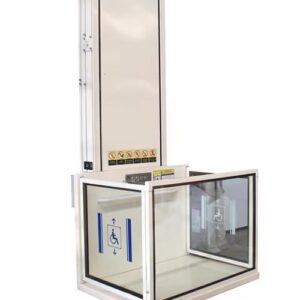Hydraulic Elevator Lift
Hydraulic Elevator Lift
A hydraulic elevator lift operates using a fluid-driven system that moves a piston to raise and lower the elevator car smoothly. It is commonly used in low to mid-rise buildings, providing reliable and efficient transportation. With minimal space requirements and smooth performance, it ensures comfort and accessibility for users.
Product Description
Hydraulic Elevator Lift: A Reliable Solution for Vertical Transportation
Hydraulic elevator lifts are a popular choice for buildings that require efficient vertical transportation. These elevators operate using a hydraulic system that consists of a pump, fluid, and a piston. The mechanism allows smooth movement between floors, ensuring a comfortable experience for passengers. They are commonly used in low to mid-rise buildings, making them a practical option for homes, offices, and small commercial spaces.
How Hydraulic Elevators Work
A hydraulic elevator functions through a fluid-based system that moves a piston inside a cylinder. When the pump pushes hydraulic fluid into the cylinder, the pressure causes the piston to rise, lifting the elevator car. To descend, the fluid is released gradually, allowing the elevator to lower smoothly. This system provides controlled movement, ensuring safety and reliability for passengers.
Advantages of Hydraulic Elevators
One of the key benefits of hydraulic elevators is their smooth operation. The system offers a comfortable ride with minimal vibrations and noise. These elevators also require less space compared to traction elevators, as they do not need a machine room above the shaft. Their ability to handle heavy loads makes them ideal for transporting both people and goods efficiently.
Hydraulic elevators are known for their durability and ease of maintenance. Since they have fewer moving parts compared to traction elevators, the chances of mechanical failure are lower. Regular maintenance ensures long-term performance, making them a cost-effective solution for buildings with moderate traffic.
Applications of Hydraulic Elevators
These elevators are widely used in residential buildings, where they provide a convenient solution for multi-story homes. In commercial spaces such as offices and retail stores, hydraulic elevators improve accessibility for employees and customers. They are also used in industrial settings where heavy-duty lifting is required, offering a reliable way to transport materials between floors.
Hospitals and healthcare facilities benefit from hydraulic elevators as they provide smooth and stable movement for patients and medical staff. Their spacious design allows for easy accommodation of stretchers and wheelchairs, ensuring accessibility for individuals with mobility challenges.
Safety Features and Performance
Modern hydraulic elevators are equipped with advanced safety features to enhance user security. Emergency stop buttons, overload sensors, and automatic rescue devices ensure safe operation in case of system malfunctions. The braking system provides controlled stopping, preventing sudden jerks or drops.
Energy efficiency is another consideration for hydraulic elevators. Advanced models incorporate energy-saving technologies such as regenerative drives and standby modes, reducing overall power consumption. These features contribute to lower operational costs while promoting sustainability.
Maintenance and Long-Term Reliability
Routine maintenance is essential for the efficient operation of hydraulic elevators. Regular inspections help identify potential issues before they escalate, ensuring continuous performance. The hydraulic fluid needs periodic replacement to maintain smooth operation and prevent leaks. Partnering with a professional elevator service provider ensures timely maintenance and quick resolution of technical issues.













Reviews
There are no reviews yet.